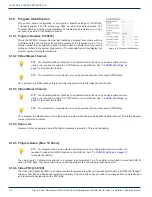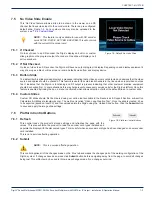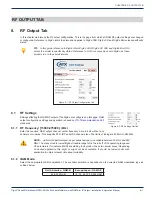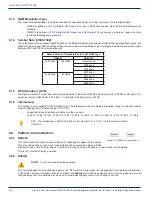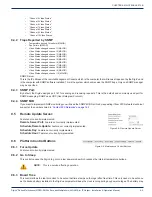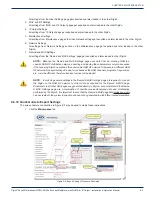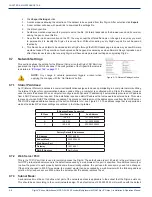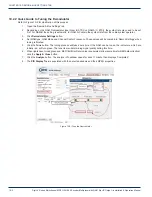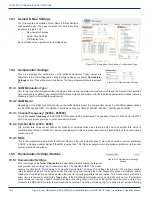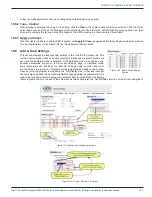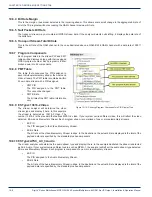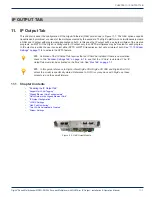
CHAPTER 9: MAINTENANCE TAB
9-2
DigiVu
®
Series Multichannel MPEG-2/H.264 Encoder/Multiplexer with QAM &/or IP Output - Installation & Operation Manual
9.2 DVIS Information
9.2.1 Product ID:
This is the hardware serial number.
9.2.2 Version:
The system firmware version installed in the DigiVu. This is the version to check if new firmware is required or recommended.
(Ignore the version number on the top right corner of the GUI display. That number is indicating the version of the GUI, not of
the DigiVu system.) The numbers displayed here directly relate to the firmware version that will be posted to the ATX Networks
support site.
For help with firmware upgrades, see
“Contact ATX Networks” on page 15-1
Information and procedures for obtaining firmware files and installing the firmware may be found at
Availability of firmware for your DigiVu may be checked at the ATX Networks support sites listed here
9.3 DVIS Hardware Status
9.3.1 Start Fans Above: [0 to 75]
Temperature at which the fans begin operating. This may be set manually to any
temperature between 0-75 °C though the default value of 10 °C is recommended.
9.3.2 Alarm Temperature: [0 to 75]
Temperature at which an alarm is initiated. This may be manually set to any temperature between 0-75 °C. This is the
temperature at which an SNMP trap is sent to the SNMP manager, if installed and configured.
NOTE:
Setting this temperature artificially low is not recommended. When the DigiVu equipment
internal temperature reaches this limit, internal power is switched to a lower power mode and the
unit will remain in this mode to prevent damage to the hardware until the temperature drops below
the set level. This is intended to avert a major hardware failure due to excess heat buildup.
9.3.3 Fan A Status:
Shows whether the fan is On, Off, or Out of Order (indicating fan failure).
9.3.4 Fan B Status:
Shows whether the fan is On, Off, or Out of Order (indicating fan failure).
9.3.5 Temperature:
Current internal temperature of the unit (°C).
9.4 SNMP Settings
All DigiVu support sending SNMP (Simple Network Management Protocol) traps to
a remote SNMP manager. This lets TCP/IP-based network management clients use
a TCP/IP-based internetwork to exchange information about the configuration and
status of nodes. A MIB is required to be compiled into the remote manager in order for
it to understand the SNMP traps.
9.4.1 SNMP MIB
The DigiVu MIB may be browsed with an SNMP Manager once it is compiled into the manager. The following values may be
received by SNMP:
•
“RPM measured on Fan 1”
•
“RPM measured on Fan 2”
•
“Channel 1 Video Status”
•
“Channel 2 Video Status”
•
“Channel 3 Video Status”
Figure 9-2:
DVIS Information Section
Figure 9-3:
DVIS Hardware Status
Figure 9-4:
SNMP Settings Section





